Resources
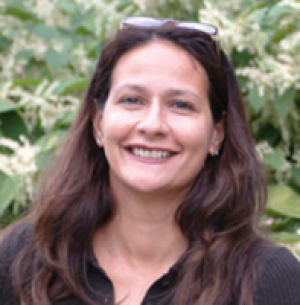
Sufia Uddin Associate Professor Connecticut College No better time to teach how Islam is “raced” than now. Comments by the likes of Donald Trump provide excellent fodder for discussions about race, religion, and racism. It is also true that the kinds of questions asked by journalists and the stories they
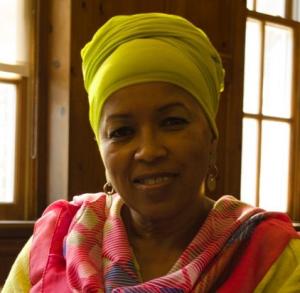
Lack of awareness about what Islam is and how its followers are religiously motivated to act, coupled with heightened tensions during the 2016 presidential campaign about the patriotism of American Muslims, led me to offer “Arabs and Muslims in the Media” as a first-time offering this semester. The twenty-one students who registered for the seminar include seven who have yet to declare a major, nine who registered for credit through the Critical Identities Studies (CRIS) Program, first-year Beloiters, graduating seniors, an exchange student from Ireland, and four born into Muslim households. Both of my teaching assistants had taken a minimum of one course with me that featured at least one section on the teachings or rituals of the world’s fastest growing religion. “Arabs and Muslims in the Media” was the first exposure to Islam, or to any of the daily realities of Muslims, for the majority of the class. We opened the seminar by engaging with Linda Martin Alcoff’s “The Problem of Speaking For Others,” an essay that challenged students to reflect upon their own positionality and privilege as they approached the two major assignments: a 200-word entry for this blog and a PSA about Islam and/or Muslims. Later in the first week, the class raised questions about the essay and their own insecurity about appearing to “speak” for followers of Islam. The sentiments of one student sums up the concerns of the rest: “I never thought about the impact of my own words on this level before, or how wrong we can be about what we think we know. I’m worried that I am not qualified to complete the final assignment.” To address such concerns, students received a brief survey of Islamic history and the emergence of Muslim communities in the U.S., along with an introduction to beliefs and practices, and the role of gender and sexuality, in Islam. Throughout the seminar, we critiqued a variety of visual and written representations. Guiding our journey were two primary texts: Evelyn Alsultany, Arabs and Muslims in the Media, and Moustafa Bayoumi, How Does It Feel to be a Problem: Being Young and Arab in America. Students reflected on the readings in various ways. Ryan, for one, noted, “By reading [Bayoumi’s work], I was opened up to the realities of young Arabs in America. I was able to read the real struggles they face from these negative stereotypes.” We watched a number of films, Youtube videos, and documentaries including “Frontline: Muslims,” “Persepolis,” “Jihad for Love,” and “The Kingdom of Heaven.” Students were also directed to analyze and review a film, selected from a list of more than 100, whose plots/characters featured Muslims and/or Islam. Interestingly, nearly half the class zeroed in on four: “Malcolm X,” “Slumdog Millionaire,” “The Battle of Algiers,” and “Dirty Pretty Things.” Our TAs, Grace Gerloff, and Joshua Randolph, also created a demo PSA that unpacked the concept of jihad. Their efforts helped students visualize what they could accomplish. While I focused on potential content for both the blog entry and PSA, Grace and Joshua mentored students on technical aspects and how to focus on a single idea. Students will present their PSAs during a public forum on May 5. Here’s a selection of student blog entries. Some students focused on the content of what they learned: Nikki: “Many Americans seem to view the hijab as a plea for help by its wearer, as though it were a sign of oppression rather than religious expression.” Constance: “The Qur’an states that both men and women should dress modestly, but what modesty means is up to interpretation.” Sasha: “Many people think that hijab refers to a specific style of garment worn by Muslim women but in reality, the concept of hijab is present in both Christianity and Judaism as well as other religions and cultures, just under different names.” Alberto: “In the Qur’an, Muslims are reminded that they are not the only people of God.” Diego: “The term “Allahu Akbar” is an Islamic phrase that translates to ‘God is Great.’ This is a phrase that is used in celebration, prayer, happiness, and many other occasions to thank God. However, the phrase is commonly tied only to terrorists.” Charlie: “The Angel Gabriel made me reevaluate the way that I was looking at Islam. Though the connection of Islam to Christianity and Judaism was something I had talked about before, this was the first explicit example I had seen that explicitly linked the three Abrahamic religions.” Chris: “The religion we have been told is the ‘enemy’ of the West, is in actuality more similar to our Christianity than we would currently like to believe.” Joe: “In high school, I enjoyed a series of action novels where the protagonist was an American special forces operative fighting to protect American interests from his Muslim enemies.These books contained blatant generalizations about the violent nature of Islam. I didn’t necessarily believe these statements, but I never questioned them.” Ryan: “By taking this class, I have been given great resources about the Muslim religion and the Quran which have allowed me to be able to pick apart what I have been taught and relearn the truth about Muslims and their beliefs.” Seamus: “This course taught me that no matter how many statistics you may know, they are not nearly as valuable as discourse, and the various identities involved, and the perspectives that they bring.” Jessica: “I personally knew nothing about Islam or any of its teachings before this class and the one thing I was very interested in was the hijab. In papers and stories, it is almost portrayed as a sign of oppression, which is not the case at all. I learned from this class the power of personal identity.” Other students reflected upon their own socialization: Kirsten: “There has been a call in the West to ‘save the oppressed Muslim women’ because of the belief that Islam is an oppressive religion. When I was younger, I fell for this ploy and believed that Islam required women to dress in a specific way.” Katlyn: “I grew up in a conservative household, I heard considerable stereotypes of Muslims. It narrowed my idea of women in Islam.” Diane: “I took this course because I thought it would be a great way to reflect and dive into how I might be able to navigate stereotypes and deep-rooted, false narratives as an aspiring journalist.” Hana: “I’ve learned that being Muslim and Anti-Zionist should not automatically qualify me as being anti-Semitic.” Still, others reflected upon the impact of technology on their new knowledge: Hoodish: “This class taught me that censored media is indeed very destructive. I intend to confront these people by making them acknowledge their biases towards Islam.” Ashley: “Video, specifically, has allowed me to learn about the different struggles that Muslims face depending upon their class, nationality, sect, immigration status, gender, sexuality, age, race, and family status.”
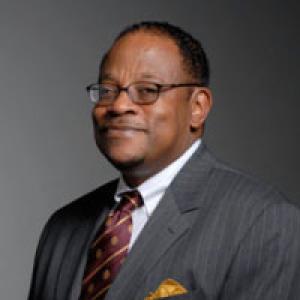
In my last blog, I reflected on my regret about the way that my classroom had become politicized in an election season in ways that I came to regret. Unexpectedly, I find myself once again politicizing my classroom; towards different ends this time. This time my act of radicalization is not so much about policy differences as about precluding a future which I would wish for none of my fellow citizens, much less my students. As I awake each morning, nowadays, I do so with the lurking fear that if we, as a nation, are not careful the morning sun may arise on an America which my grandparents knew. Theirs was a world of authoritarian regimes and dictatorships here in the United States, not in far off lands. Jim Crow was quite simply a dictatorship; one based, albeit on race, but an authoritarian regime nonetheless. This personal history of my folks, along with the programs of genocide carried out against Native Americans, and the relocation of Japanese Americans to places just shades shy of concentration camps leaves me little illusion that it could not happen here. The it being the rise of an authoritarian regime which uses genocide and ethnic cleansing as a means to gain and maintain power. I am not at all convinced that we are not in such a moment. Nor, am I naïve enough to believe that large numbers of our fellow citizens would not welcome such a development believing foolishly that only they would be its beneficiaries. So, for me, the question each day is how do I, as a teacher, work to preclude this future in favor of one in which we all have a place? I forget. Having learned that to simply make a political argument runs the risk of creating a fissure in my classroom which precludes the imagining of a common future, I now do simple things to resist what I know to be the ways of authoritarianism. Writ large in this resistance is my willful forgetting of my student’s names. A forgetfulness which requires that each class session I must ask them to reintroduce themselves, where they are from, and in some form give voice to their hope and aspiration for our future. This is done in differing ways but the shape and intent remain stable. While I realize that I run the risk of seeming doddering and not attentive enough I am willing to accept these assessments. My willingness comes from my understanding of how authoritarian regimes co-opt people into ways of being which they would normally find unrecognizable. The most common way is to constrict the public square in such a way that people can only enter and leave it at the cost of the personal identity of themselves and others. Public identity is then mediated wholly on the terms of the regime. A thumbnail way to think of this is that individual selves are subsumed into a super-self that then robs them of their identity as individual persons, and most importantly as moral agents. It is this collapse of the public square that I seek to counter through the continual invitation for students to re-inscribe themselves in and on the public square which is our classroom. By the time we have “re-introduced” ourselves the room is so full of stories and our hopes there is little room for a super-self to emerge. In this, I attempt to cultivate the habits of being and mind for my students which intuitively resist invitations to lose themselves for the sake of a grand future for some of us at the expense of others of us. A future which has no place for my neighbor is a future not worth having and one which demands acts of faithful resistance, no matter how small.
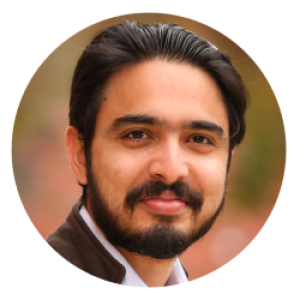
This blog builds on Caleb Elfenbein’s excellent post in this series “Scaffolding Theory at the Introductory Level.” I want to think about two interconnected issues in relation to engaging theoretical discussions in the study of Religion and the Humanities in an introductory course on Islam: 1) cultivating a practice of thinking critically about key categories like tradition, modernity, secularism etc. and 2) disrupting conventional binaries (like tradition/modernity, religion/secular) through which such categories are popularly approached. Perhaps the most difficult pedagogical task awaiting courses on religion and Islam is that of unsettling certain ingrained assumptions and attitudes that students bring to particular concepts. While dismantling common stereotypes about Islam to do with violence, patriarchy, and political repression is still reasonably doable, much harder is the task of disturbing entrenched assumptions about the presumed goodness of say modernity, secularism, pluralism and liberal democracy. This is a problem I struggle with in all my classes, not least the introductory course on Islam; in this and the next few blogs I hope to reflect on this struggle in hopefully productive ways. So what could be some effective ways to share with students in an introductory course on Islam conceptual arguments that by now are taken as established positions in Religion Studies: for instance, tradition is not the opposite of modernity, religion is not the inverse of the secular etc. Put differently, how to do theory (or conceptual interrogation) without necessarily mentioning the theorists or having undergrads suffer through theory talk? Let me share some experiences/strategies on this front from my Islam course with corresponding commentary on potential benefits and persistent obstacles. In this post, I want to focus on the first day of the semester in which an assigned reading is discussed. The task I set for this day is the interrogation of the concept of religion. I begin all my courses with chapter two of Carl Ernst’s Following Muhammad: Rethinking Islam in the Contemporary World “Approaching Islam in Terms of Religion.” This chapter charts in an eminently lucid manner major conceptual and political transformations in the category of religion over time. By comparing the understanding of religion espoused by pre-modern thinkers like Cicero (d. 43 BC) and St. Augustine (d. 430) with that of the 17th-century Dutch jurist Hugo Grotius (d. 1645), Ernst highlights profound ruptures in the early modern and modern career of religion. An earlier notion of religion, as for instance articulated by Augustine in his text Of True Religion centered as the cultivation of virtue through repetitive practice. In contrast, the modern concept of religion was marked by intensified competition over the question of authenticity (as found in Grotius’s text On the Truth of the Christian Religion). Moreover, Ernst shows that this modern competitive notion of religion was shaped in large measure by the power and politics of colonialism coupled with the activities of European missionaries who in fact used Grotius’s text as a debating manual. What I find remarkable about this text is the way it presents in simple language the key features of the world religions argument that has occupied so much of the often-dense theoretical landscape of Religious Studies. I ask students (in small group discussions) to identify and list by thinker key differences between pre-modern and modern conceptions of religion, best encapsulated in the shift from “religion” as embodied practice to “religions” as exclusive clubs reducible to distinct scriptures and competing truth claims. We also spend considerable time discussing the intimacy of a modern competitive understanding of religion and the emergence of the modern state. Particularly effective in this regard is to complement this chapter with a sample of the British census survey in late 19th century India. It is through this visually charged primary source that students really get the tectonic implications of being compelled to box one’s religious identity into one among several competing options. Also invaluable is the narrative in this chapter involving a student at the American University of Beirut who when asked to identify his religious identity in university registration forms, responds in puzzlement “But I am an atheist?” To which the registrar responds, “but are you a Christian atheist, a Jewish atheist, or a Muslim atheist.” (p. 58). This story (that we read aloud in class) brings home for students the point about a modern countable and competitive notion of religion with particularly clarity. But while students generally get the idea that meanings attached to categories like religion shift over time, they struggle to dismantle a celebratory attitude towards modernity and modern pluralism. In the Religion to Religions argument, while recognizing the problem of religions as competitive clubs, students tend to persist with the idea that having multiple religions is an achievement of pluralism in modernity. That the discourse of pluralism is itself stained with the violence of colonialism and modern state power is a point they are not quite ready to entertain. Particularly instructive in this regard is the critical attitude students often adopt towards Augustine on why his text was titled “of True Religion.” They often protest: why did Augustine not recognize (read respect) religions other than Christianity (the True Religion). The tenor of this discomfort says much about the deep internalization of liberal gestures of recognition and respect among undergrads. But despite all this, what Ernst’s chapter and starting a course with this chapter does achieve is the attunement of students to the labor of taking seriously the histories and ideological arguments invested in crucial categories of life like religion. But how can one sustain such a genealogically oriented pedagogy in discussions on more specific topics in Islam? That is what I hope to discuss in my next post on November 9th.
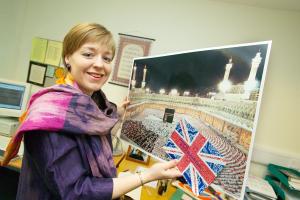
Sophie Gilliat-Ray Director Centre for the Study of Islam in the UK Cardiff University The Muslim populations of most Western societies have grown over the last two decades as a result of immigration and conversion to Islam. This has drastically changed the landscape in which teaching and learning about Islam.
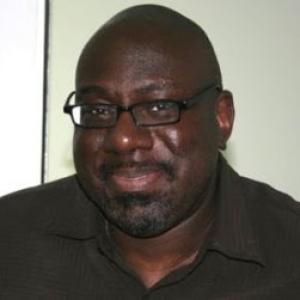
One of my earliest experiences was my first day at school in Bradford, West Yorkshire, in The United Kingdom. Sitting in what was the equivalent of the reception or the beginner's class, I suddenly felt an intense pain in my right arm. I turned around to find that I was being bitten by this White boy sitting next to me. When I asked him why he had bitten me, he said "I wanted to see what colour blood you have. My nan (colloqualism for Grandmother) says that you coloured people have different blood to us." That incident, when I was 4 years old, has stayed with me. The actions of that young White boy were based on the assumption that I was somehow different to (and less than) him. As I am writing this piece the news is awash with the disturbances in Ferguson, Missouri, where an unarmed Black man was shot dead, killed by the police. While the two events are separated by over 40 years, they are linked in the casual disregard many White societies still have towards Black people. The teachable moment that arises from any casual observation of the latter event, which in my case is informed by the former, is that of subjectivity. What does it mean to be a subject? What does it mean to be a human being endowed with the capacity to create self meaning and to generate worth and 'somebodiness' in the world? The converse of being a subject is to be an object. Objects have no intrinsic meaning in and of themselves. Meaning for an object is given to it, not from within, like a subject, but from without, by external forces. To treat a subject as if it were an object, i.e. with no intrinsic worth other than what is given it, is often named as "objectification." For a human being to be treated as if they are an object means that they are considered by others as having no intrinsic meaning or value in and of themselves. Therefore, they can be treated as others so decide. So I could be bitten with little thought given as to whether it was right, justified, or how I might feel. More crucially, for the purposes of this blog, it also means that an unarmed Black man can be shot and the burden of responsibility be placed on the moral character of the objectified Black youth and not the White, armed police officer. One of my all time heroes is the South African freedom fighter, Steve Biko. Biko was an advocate of "Black Consciousness," a sociopolitical movement committed to enabling Black Africans in South Africa to reclaim their innate subjectivity. For Biko, it was imperative that Black people rediscover what it meant to generate their own internalised self meaning and definition of self that transcended the objectified impositions of White racists. Biko was murdered in 1977. In the 37 years since then much has changed. There is a Black man in the White House. Something that would have been considered impossible in 1977. And yet the dehumanising forces that give rise to objectification sadly remain. Black people continue to be treated as objects and have their innate self worth and claims to dignity and even life trampled upon and transgressed. The challenge for theological educators is one of preparing our students to both deconstruct and transform the objectifying tendencies of White hegemonic systems, in order that the innate subjectivity of all people, including Black people, can be acknowledged. The life, struggles, and ultimately, the death of Steve Biko reminds us that disinterested knowledge for knowledge's sake is a luxury we can ill afford when faced with the death dealing forces of objectification. Theological education must be transformative and committed to the human flourishing of all peoples. The people of Ferguson, Missouri and beyond deserve nothing less. This model of theological education is one that is embedded in both the pedagogical processes and the subject-content of the curriculum. In terms of both pedagogical and subject-content, it is the concern to bring the wider world and the lived realities of human subjectivity into the classroom and the teaching moment. I have constantly asked of students "How does the human subject impact upon the intellectual theories and frameworks we are addressing?" So in classes on say "theological reflection" or "Christian formation", the question becomes "How does gender or other issues of power impact what we notionally believe it means to be a Christian?" The point I am trying to get them to see is that incidents such as me being bitten back in the late 1960's, or the shooting of an unarmed Black man in Ferguson in 2014, or the death of Steve Biko in 1977, do not just fall from the sky. They don’t arrive fully formed. They are constructed. They have their antecedents in the myriad ways in which power and the negative hermeneutics of difference lead to destructive forms of objectification, which in turn, give rise to a continuum of violence. Sadly, the highly charged political agenda I am outlining for a transformative mode of theological education has found very few takers. The continued push for a non-committed, seemingly neutral, process of teaching and learning still holds sway and far too much education operates as if the incidents impacting Ferguson, Missouri do not exist. We have a long way to go.